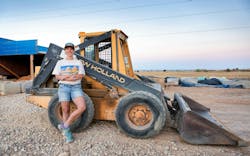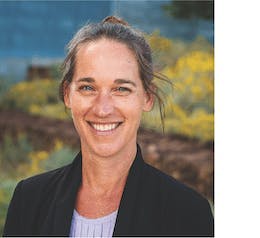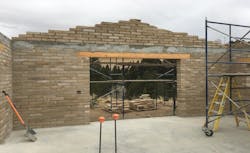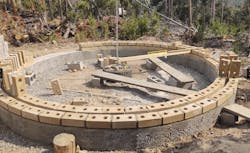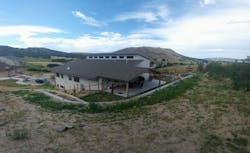Building Blocks to Sustainable Construction
Lisa Morey co-founded Nova Terra (formerly Colorado Earth) in 2017 to address the need for sustainable housing in response to climate change. The company specializes in supplying above-grade, low-rise masonry building projects with EcoBlox, a product made from the waste stream or overburden material from local quarries.
Morey, who is Nova Terra's CEO, conceived the idea for EcoBlox while studying in New Zealand and brought it to the U.S. when she returned in the mid-2000s. Since then, the system has been used to help rebuild communities decimated by natural disasters, specifically, rebuilding efforts following the 2021 Marshall Fire near Boulder, Colo., which destroyed approximately 1,100 structures.
The company also was one of 10 finalists to present at a “pitchfest” event during the Housing Innovation Summit in Denver earlier this year.
PRO BUILDER: Can you tell me about your company’s backstory and how you initially got into this line of work?
Lisa Morey: After I graduated, I started working for an architect, and I took some art classes on the side to use the other side of my brain. I wanted to explore the world, and also study more architecture, so I enrolled in a study abroad program at the White Cliff College of Art and Design in Auckland, New Zealand. There, I was given an assignment by my teachers to follow a project for a year, document what we saw, and hopefully learn something along the way.
I found a builder on a nearby island who was making mud bricks, and I started following his projects; he had about six or seven homes going up, and that's what I started documenting for a year. I was in New Zealand for about five or six years, and we collectively built about 50 homes.
PB: How did you come up with the idea for EcoBlox, and what value does it offer the housing industry?
LM: I was always aware that masonry is a fire-resistant material, and in returning to the U.S., I realized it’s not a way we build in many parts of the country.
My background with adobe mud bricks led me to want to start a company to bring them—in some form—to scale. I gravitated toward compressed earth blocks, or CEBs, but then I added a stabilizer to make the blocks harder, stronger, and more water-resistant.
Masonry showcases properties of longevity and fire resistance—it’s a very strong building material. The story of The Three Little Pigs comes to mind.
PB: What are the barriers and opportunities for builders to incorporate EcoBlox into home construction?
LM: For a builder, the best asset they can have is a masonry trade partner that can do structural block work. There are three kinds of masons: block, brick, and stone. They each have individual skill sets, but the block mason is the one that has the most transferable skills for our system.
And hopefully there’s a good relationship between the block mason and the electrician. You need to get them on the same page because they’re going to be dancing up the wall together to integrate the electrical system.
Things go a little differently with a masonry wall compared with a framed wall. The block wall is going to look like it takes a little more time to build than a framed wall, but then there are all of the layers that have to go on a framed wall after [it’s put up], whereas the masonry wall is coming up structurally from the bottom to the top, and it then just requires a plaster coat to finish.
RELATED
- Sustainable Housing: Growing Homes From Fungi
- Interior Designers and Fashion Directors Team Up to Find Sustainable Solutions
- Sustainable, Structural Panels Made From Grass
PB: Where is the housing industry now in terms of its evolution in sustainable construction? Have you seen progress since starting your company?
LM: When I first got into this practice, I think I heard about embodied carbon, but it wasn’t something widely understood, and it certainly wasn’t as relevant as it is today.
Embodied carbon is the amount of energy it takes to make something. I like to use the example of a Tesla battery: An electric car doesn’t use any fuel or petrol, but it does take a lot of energy to create all batteries, and then what happens to those batteries at the end of the car’s life?
Now, there’s a lot of new understanding around embodied carbon. I’m starting to see that shift. It’s preliminary and premature because we’re in the Wild West in terms of understanding what it means to achieve low embodied carbon. We’re really having to dissect carefully what goes in and out of that calculation.
PB: What are your plans for growth?
LM: Colorado is where I live and it’s where I started my practice with compressed earth blocks and really went to school on how to build in colder climates.
When I lived in New Zealand and in Florida, I never had to deal with what happens when it freezes or when it’s really cold for a long time.
Now I’m ready to take all I’ve learned and offer it to regions and climate zones that can mostly benefit from thermal mass.
PB: Is there anything else you think home builders should know?
LM: There’s a conversation going on right now about accessing raw materials. Globally, we’re running out of the coarse, angular sand used to make concrete. We’re feeling the pressure slowly coming on, and the need is there to diversify and localize our building materials.
